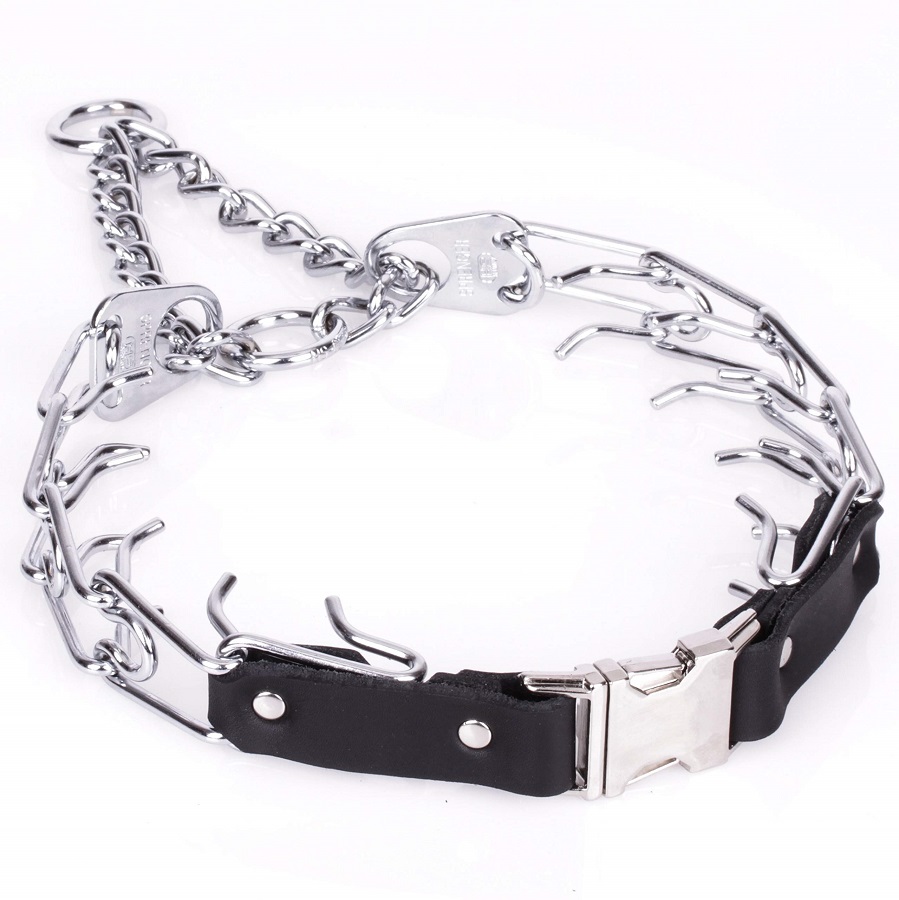 Prong collars, also known as pinch collars, have long been a topic of debate among dog owners and professionals alike. While they can be effective tools for training and managing certain behavioral issues, concerns about their safety and ethical implications are valid and should be addressed. In this article, we aim to provide a balanced perspective on prong collars, discussing their safety and ethical considerations in a relaxed and cheerful tone.
Prong collars, also known as pinch collars, have long been a topic of debate among dog owners and professionals alike. While they can be effective tools for training and managing certain behavioral issues, concerns about their safety and ethical implications are valid and should be addressed. In this article, we aim to provide a balanced perspective on prong collars, discussing their safety and ethical considerations in a relaxed and cheerful tone.
Safety First:
When it comes to any training tool, the safety of our beloved furry friends should always be the top priority. Prong collars should only be used responsibly and under the guidance of a professional dog trainer or behaviorist. These experts possess the knowledge and experience to ensure that the collar is used correctly and in a manner that minimizes any potential risks.
Critics of prong collars argue that they can cause physical harm or discomfort to dogs. However, when used properly, prong collars apply gentle pressure without causing pain. The purpose of the collar is to mimic the natural correction a mother dog provides to her pups. It provides clear communication and redirects the dog’s attention, discouraging unwanted behaviors. It’s important to remember that responsible usage includes avoiding excessive force or jerking motions and ensuring a proper fit to prevent any discomfort or injury.
Ethics and Alternatives:
The ethical aspect of using prong collars revolves around the concept of positive reinforcement training and whether they align with this approach. Positive reinforcement focuses on rewarding and encouraging desired behaviors rather than using aversive techniques. Critics argue that prong collars may rely too heavily on aversive methods, potentially causing fear or anxiety in dogs.
While positive reinforcement techniques should be the foundation of any training program, it’s important to acknowledge that different dogs may require different tools. Prong collars can be a valuable tool when used responsibly and in conjunction with positive reinforcement training. However, it is crucial to explore alternative tools and techniques if a prong collar is not suitable for a particular dog or its training goals.
Front-clip harnesses, head halters, clicker training, and other positive reinforcement techniques can be effective alternatives to prong collars. These tools and methods focus on rewarding good behavior, teaching cues, and promoting a positive and mutually respectful relationship between dog and owner. The key is to find the right approach that best suits the individual dog’s needs and temperament.
Professional Guidance:
Seeking professional guidance is essential when considering the use of a prong collar or any training tool. A professional dog trainer or behaviorist can assess the dog’s behavior, recommend appropriate training techniques, and provide guidance on the responsible use of a prong collar. They can also help determine if a prong collar is the right tool for achieving the desired behavioral changes.
It is important to note that not all dogs are suitable candidates for prong collars. Dogs with pre-existing health issues, such as neck or spinal problems, or those with anxious or fearful temperaments may not be well-suited for this type of collar. A professional can conduct a thorough assessment and provide recommendations based on the individual dog’s needs and circumstances.
Education and Responsible Use:
Education plays a significant role in addressing concerns about prong collars. Dog owners should familiarize themselves with proper fitting and usage techniques, as well as understanding the purpose and potential benefits of using a prong collar. This knowledge empowers owners to make informed decisions and ensures the well-being of their dogs.
Responsible use of prong collars involves using them as a training aid rather than a permanent fixture. They should never be left on a dog unsupervised or used as a substitute for proper training and behavior management. Regular check-ins with a professional can help monitor progress, address any concerns, and make adjustments to the training plan as needed.
In conclusion, addressing concerns about prong collars requires a balanced perspective that considers both safety and ethical considerations. Responsible usage, professional guidance, education, and a focus on positive reinforcement techniques are key elements in ensuring the well-being of our furry friends.